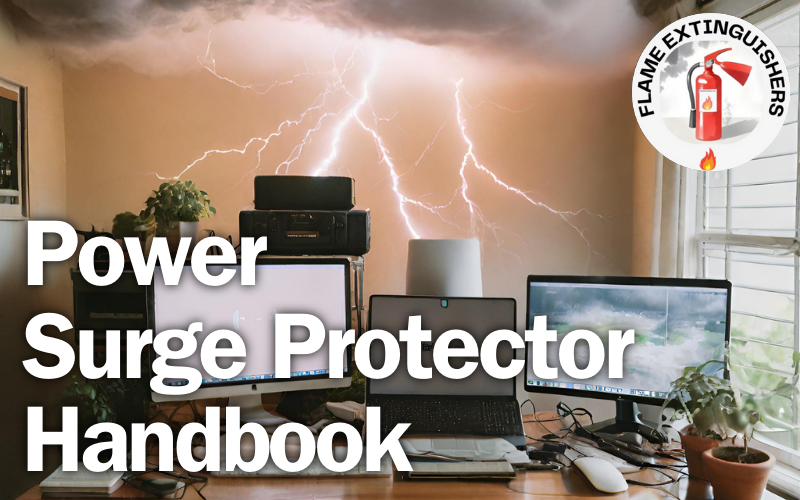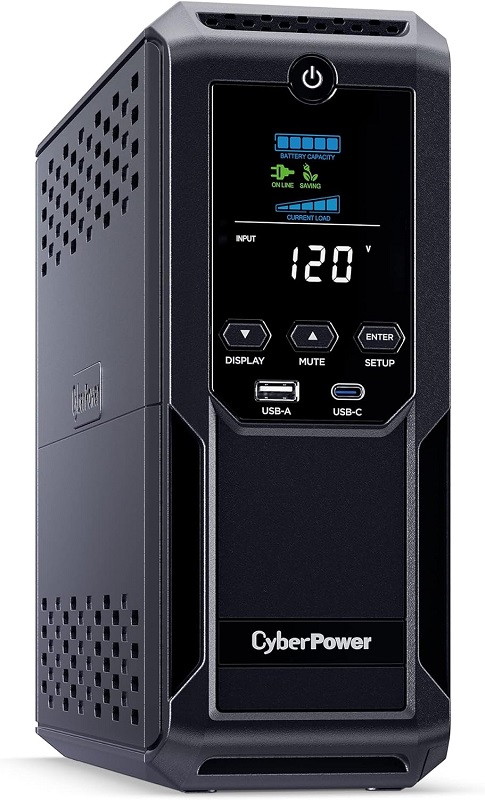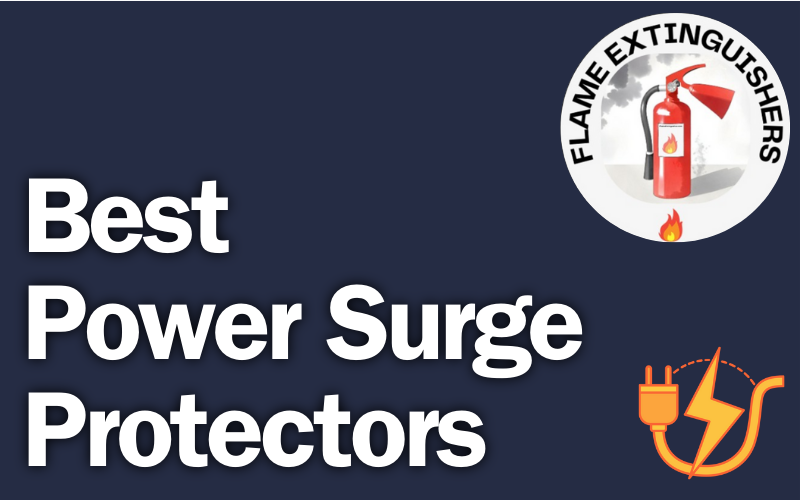Hey, folks! Mike McCloud here, your go-to guy for all things fire safety. Today, we’re diving into a topic that’s often overlooked but can literally save your house from going up in flames – choosing the right power surge protector. It’s like the superhero of your electronics, and we’re about to uncover the secrets to picking the best one.

Understanding Power Surges
Alright, so power surges are the sneaky villains in this story. Lightning strikes, faulty wiring – these dudes can mess up your gadgets in a heartbeat. Picture this: you’re binge-watching your favorite show, and suddenly, a surge fries your TV. Not cool, right? That’s why understanding what causes these surges is step one.
You’ve got your lightning strikes during storms or that power-hungry appliance switching on and off like a hyperactive toddler. These surges can mess with your gadgets faster than you can say, “What just happened?” And guess what? Statistics show that over 50% of home electrical fires are due to wiring issues. Scary stuff.
Identifying Vulnerable Devices and Areas
Let’s talk targets. Your sensitive electronics are like the cool kids in high school – they attract trouble. Computers, TVs, gaming consoles – these guys need protection.

But it’s not just about the devices; we need to scout the high-risk zones too. Kitchens, laundry rooms – basically, anywhere water and electricity play footsie. Imagine your coffee maker going haywire, and suddenly your kitchen’s on fire. Not the wake-up call you had in mind, huh?
Features to Look for in a Power Surge Protector
Now, let’s gear up with the right tools. Surge protectors come with fancy specs like joule ratings and clamping voltages. Joules are like the protective forcefield – the higher, the better. Clamping voltage? That’s how quickly your protector reacts. You want something faster than a ninja dodging shurikens. And hey, don’t forget about those USB ports – because who’s got time to find a charger?
Its as easy as lightning striking nearby, and poof! The whole home theater system is toast. That’s why spending a few extra bucks on quality gear is like insurance for your electronics.
Our Recommended Power Surge Protector for High Value Office or Home Entertainment Setups

CyberPower CP1500AVRLCD3 Intelligent LCD UPS System
Our Rating: 4.72 out 5 Stars
Different Types of Power Surge Protectors
Let’s explore the superhero variations. Basic power strips are like the sidekicks – they offer some protection, but they’re not the main event. Whole-house surge protectors? Now we’re talking Superman level. They guard your entire home from power surges, not just individual gadgets. And don’t forget the UPS systems – the Batman of the group. They swoop in during power outages, giving you time to save your work and shut down like a responsible adult.
Ever had your computer crash during a storm, losing hours of work? Yeah, I feel your pain. A whole-house surge protector could’ve been the hero in that story.
Installation and Usage Tips for Power Surge Protectors
So, where do you place these protectors? It’s like setting up defenses in a castle. Stick them close to your electronics, and never daisy-chain them like Christmas lights. One weak link and the whole chain crumbles. And folks, remember to give these protectors some love – test them regularly. It’s like changing the batteries in your smoke detector – you do want your gadgets to survive, right?
| Device Category | Recommended Joule Rating |
|---|---|
| Computers and Laptops | 600 Joules and above |
| TVs and Home Entertainment | 1000 Joules and above |
| Gaming Consoles, Washers and Dryers | 1500 Joules and above |
| Kitchen Appliances, Home Theater Systems | 2000 Joules and above |
| Whole-House Surge Protectors | Consult with a professional installer |
I knew this guy who thought it’d be clever to daisy-chain surge protectors in his home office. One day, a power surge hit, and boom! His computer, printer, and that vintage lava lamp – all fried. Not the brightest idea.
Importance of Compliance and Certifications
Alright, let’s get nerdy for a minute. There are standards these protectors need to meet. Look for certifications like UL or ETL – it’s like the Good Housekeeping Seal of Approval, but for surge protectors. Trust me; you don’t want some knock-off protector when it’s game day for a thunderstorm.
Did you know that a surge protector without proper certification is like having a security guard who naps through their shift? It won’t be there when you need it most.
Case Studies & Cost-Benefit Analysis
Time for some real-life drama. Picture this: Jane’s house gets hit by lightning. She invested in a certified surge protector, and bam! All her gadgets were unscathed. Meanwhile, her neighbor, Bob, went for a cheapo version. Lightning struck, and let’s just say Bob’s TV turned into a pricey paperweight. Moral of the story – investing in the right gear pays off when Mother Nature throws a tantrum.
In addition, most high quality power surge protectors come with warranties & connected devices insurance in the off chance that they fail to protect your devices.
I get it; we’re all budget-conscious. But think of it this way – spending a bit more on a quality surge protector is like insurance for your electronics. The average cost of replacing a fried TV or computer? Way more than a decent surge protector. It’s a no-brainer.
Alright, fire safety warriors, we’ve covered a lot today. Choosing the right surge protector isn’t just about avoiding a fried laptop; it’s about safeguarding your home from potential disasters. So, invest wisely, stay safe, and let’s keep those flames where they belong – in the fireplace.
Additional Resources for Power Surge Protectors
For those looking to gear up, check out our buying guide here – they’ve got your back. And if you want more fire safety wisdom, head over to our home page to learn more here.

Our Term of the Day
Luminous Egress Path Markings: Photoluminescent markings or signs designed to guide individuals to safety in low-light conditions during a fire emergency.
Stay informed, stay protected, and until next time, this is Mike McCloud signing off.



